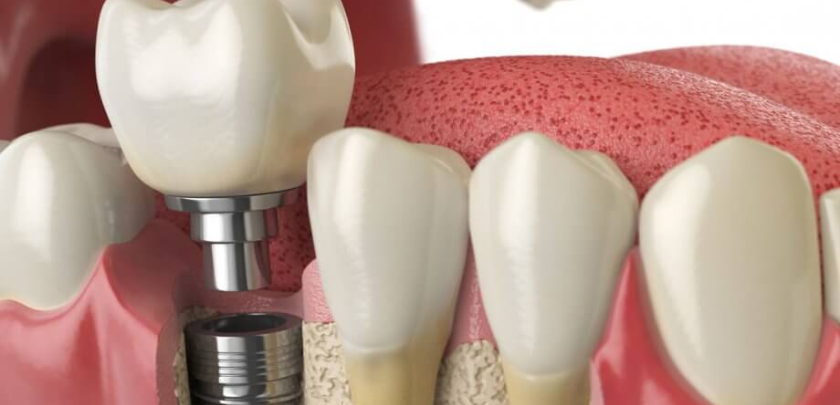Dentists recommend 2 exams per year. Book your exam today!
How Much Does It Cost To Remove A Dental Implant?

In recent years, dental implants have become a popular solution for individuals seeking to restore their smiles and improve oral functionality. However, circumstances may arise where removal becomes necessary. Understanding the costs associated with dental implant removal is crucial for those facing such a decision.
The Need for Dental Implant Removal
Dental implant removal may become necessary for various reasons, ranging from complications during the initial placement to infection, bone loss, or changes in oral health. Although implants are designed to be a permanent solution, unforeseen circumstances may warrant their removal.
Factors Influencing Removal Costs
Implant Type and Material: The type and material of the implant play a significant role in determining removal costs. Titanium implants, widely used for their durability, may involve different extraction processes compared to zirconia implants.
The extent of Surgery: The complexity of the removal procedure influences costs. Straightforward cases may involve a simple extraction, while more complicated situations may require surgical intervention, impacting the overall expenses.
Additional Procedures: Sometimes, additional procedures such as bone grafting or tissue repair may be necessary during removal, contributing to the overall cost. The need for such procedures depends on the individual case.
Professional Fees: The experience and expertise of the oral surgeon or dentist performing the removal can affect the cost. Dental professionals may charge more for their services, although the quality of care is typically a priority.
Location: The geographical location of the dental clinic also influences costs. Urban areas tend to have higher overhead expenses, resulting in increased overall charges for dental services.
Cost Range for Dental Implant Removal
The cost of removing a dental implant can vary widely, typically ranging from $500 to $3,000 or more. However, it’s essential to note that this estimate is a generalization, and individual cases may fall outside this range based on the factors mentioned earlier.
Gaining Deeper Understanding: Dental Implant Removal Expenses
Embarking on the journey of dental implant removal involves various aspects, each contributing to the overall expenses without specifying specific numerical values. Let’s delve into the key components that shape the financial landscape of this process.
Consultation and Assessment: The initial phase revolves around a comprehensive evaluation to determine the necessity of removal. Professionals assess the condition, considering factors beyond monetary concerns.
Diagnostic Imaging: Employing diagnostic tools, such as X-rays and imaging, aids in meticulous planning for the removal process. The emphasis here is on the precision of diagnosis rather than focusing on explicit cost figures.
Professional Fees: The fees associated with the removal procedure are contingent upon its complexity. Professionals charge based on the intricacies involved, ensuring patients receive the attention and expertise required for their unique circumstances.
Anesthesia: The type of anesthesia administered during the removal is a pivotal factor. Whether opting for local anesthesia or leaning towards sedation, the focus is on tailoring the approach to the patient’s comfort and procedural requirements rather than a specific cost breakdown.
Follow-up Care: Post-removal care encompasses various elements, from monitoring the healing process to prescribed medications. While essential for a successful recovery, the nuanced aspects of follow-up care are highlighted rather than delineating precise financial details.
Insurance Coverage and Financing Options
Although dental implant removal is often considered elective, certain insurance plans may provide coverage if the removal is deemed medically necessary. It is crucial to check with the insurance provider to determine the extent of coverage.
For those without insurance coverage, some dental clinics offer financing options or payment plans to make the cost more manageable. Exploring these options can help individuals proceed with the necessary removal without compromising their financial well-being.
Tips for Cost Management
Seek Multiple Opinions: Before committing to a removal procedure, consider seeking opinions from multiple oral health professionals. This can provide a more comprehensive understanding of the necessary steps and associated costs.
Inquire About Payment Plans: Discussing payment plans or financing options with the dental clinic can ease the financial burden. Many clinics are willing to work with patients to create a feasible payment arrangement.
Understand Insurance Coverage: Investigate your insurance coverage thoroughly. Some plans may cover a portion of the removal costs if deemed medically necessary. Clarify the terms with your insurance provider.
While the prospect of dental implant removal may seem daunting, being informed about the associated costs is a crucial step in making sound decisions about oral health. From understanding the factors influencing removal expenses to exploring insurance coverage and financing options, individuals can approach the process with confidence and financial preparedness.
The cost of removing a dental implant varies based on several factors, and individuals should prioritize their oral health while being mindful of their financial situation. Seeking professional advice, exploring payment options, and understanding insurance coverage are essential steps in ensuring a smooth and well-informed decision-making process.







